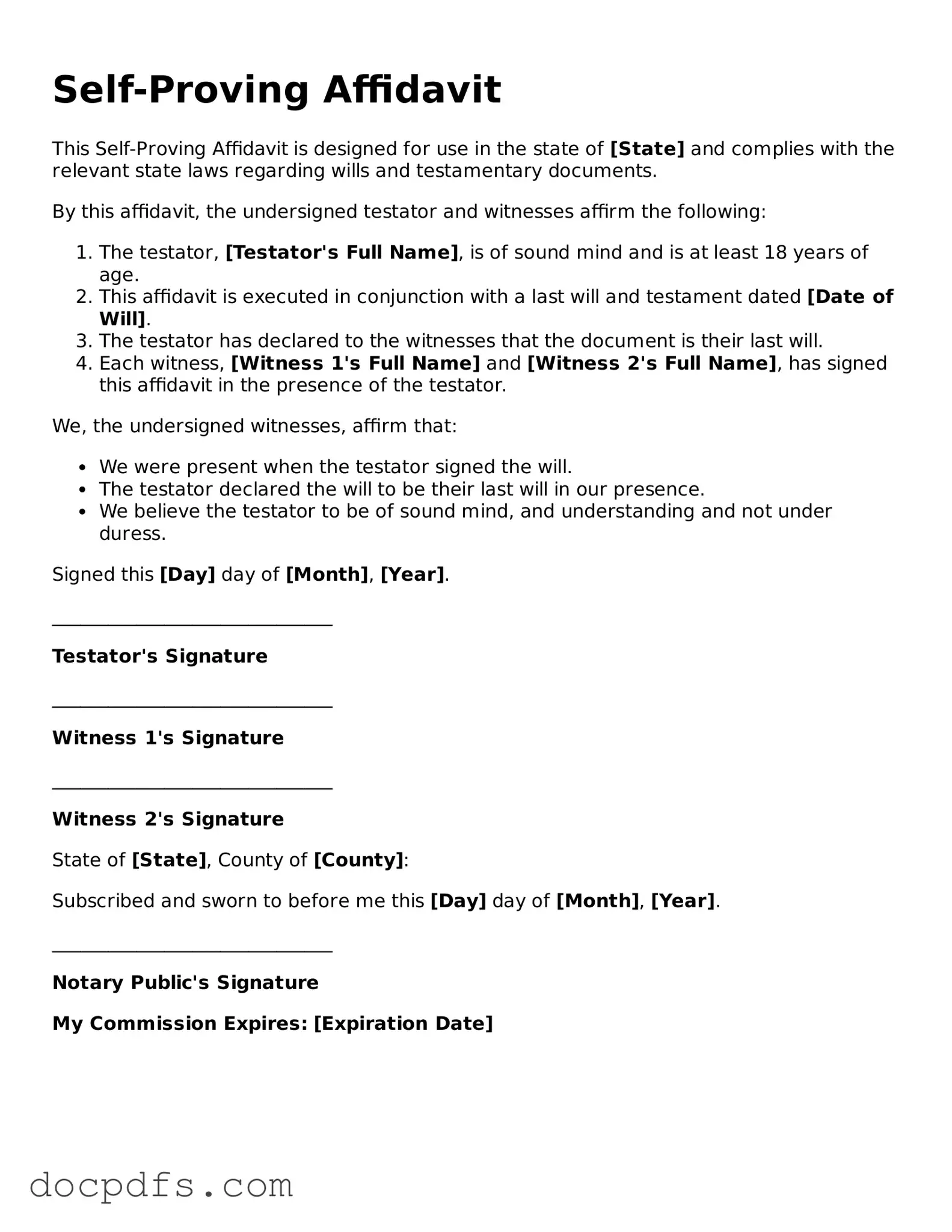What is a Self-Proving Affidavit?
A Self-Proving Affidavit is a legal document that accompanies a will. It serves to confirm the authenticity of the will and the signatures of the witnesses. This affidavit allows the will to be accepted by the court without requiring the witnesses to testify, streamlining the probate process.
Why is a Self-Proving Affidavit important?
This affidavit is important because it simplifies the probate process. When a will is self-proving, it reduces the time and effort needed to validate the will. This can provide peace of mind to the testator and their loved ones, knowing that the will can be processed more efficiently.
Who can create a Self-Proving Affidavit?
Typically, the testator (the person making the will) and the witnesses must sign the Self-Proving Affidavit. These witnesses should be individuals who are not beneficiaries of the will to avoid any potential conflicts of interest. It is advisable to consult with a legal professional to ensure that the affidavit meets state requirements.
What are the requirements for a Self-Proving Affidavit?
Requirements can vary by state, but generally, a Self-Proving Affidavit must include:
-
The signatures of the testator and witnesses.
-
A statement affirming that the testator signed the will in the presence of the witnesses.
-
A notary public's acknowledgment of the signatures.
It is crucial to follow your state’s specific guidelines to ensure the affidavit is valid.
How does one execute a Self-Proving Affidavit?
To execute a Self-Proving Affidavit, follow these steps:
-
Prepare the affidavit according to state laws.
-
Have the testator and witnesses sign the affidavit in the presence of a notary public.
-
Ensure that the notary public acknowledges the signatures and affixes their seal.
After execution, keep the affidavit with the original will for easy access during probate.
Can a Self-Proving Affidavit be revoked?
Yes, a Self-Proving Affidavit can be revoked or replaced if the testator decides to change their will. If a new will is created, it should also include a Self-Proving Affidavit if the testator wishes to maintain that convenience. It’s essential to ensure that any previous wills are properly revoked to avoid confusion.
Is a Self-Proving Affidavit required?
No, a Self-Proving Affidavit is not legally required to make a will valid. However, it is highly recommended as it can significantly ease the probate process. Without it, witnesses may need to be called to testify about the will, which can complicate matters and lead to delays.
Where should I keep my Self-Proving Affidavit?
It is best to keep the Self-Proving Affidavit in a safe place alongside the original will. Inform trusted family members or legal representatives about its location. This ensures that it can be easily accessed when needed during the probate process.
